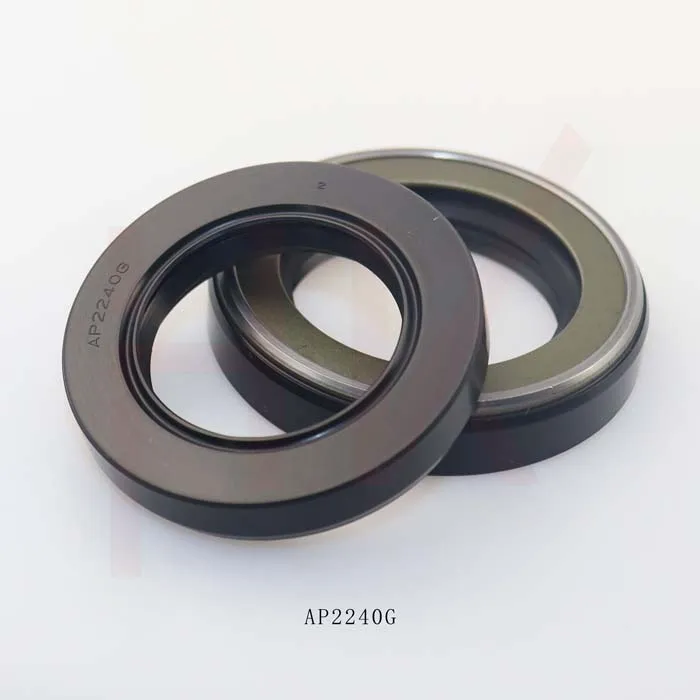Nov . 05, 2024 23:19 Back to list
Excavator Sealing Solutions for Enhanced Performance and Durability.
Understanding Excavator Seals Importance, Types, and Maintenance
Excavators are essential machines in the construction and mining industries, known for their versatility and efficiency in performing various tasks, including digging, lifting, and demolition. However, like any heavy machinery, excavators are made up of numerous components that require regular maintenance to ensure optimal performance and longevity. One critical aspect of an excavator's operation that often goes unnoticed is the sealing system. Excavator seals play a vital role in the machine’s functionality, preventing fluid leaks and protecting internal components from dirt and debris. This article delves into the importance, various types, and maintenance practices of excavator seals.
Importance of Excavator Seals
The primary function of excavator seals is to maintain the integrity of hydraulic systems. Hydraulic systems rely on pressurized fluid to operate various mechanisms within the excavator, such as the boom, arm, and bucket. Any leaks in this system can lead to significant performance issues, resulting in decreased power, slower movement, and, ultimately, potential machine failure. Additionally, seals are designed to keep dirt, dust, and other contaminants out of hydraulic components, which is crucial for preventing wear and tear on parts like pistons and cylinders. This protective function helps to extend the lifespan of the excavator and reduces the risk of costly repairs.
Moreover, seals contribute to overall safety on the job site. A compromised hydraulic system can lead to unexpected machine behavior, posing dangers to operators and surrounding personnel. Maintaining effective seals ensures that the excavator operates smoothly and predictably, enhancing safety for everyone involved.
Types of Excavator Seals
Excavator seals come in various types, each designed for specific functions and applications. Here are some of the most common types
1. O-Rings These are circular seals typically made from rubber or synthetic materials. O-rings are widely used to create a seal between two cylindrical components, preventing fluid leakage in hydraulic cylinders and other critical areas.
2. U-Cups Shaped like a U, these seals provide effective sealing on both the pressing and retracting strokes of hydraulic cylinders. U-cups are ideal for applications where high pressure is present.
3. Rod Seals These seals are designed to prevent leaks along the moving rod of hydraulic cylinders. They are crucial in maintaining pressure within the system while allowing for smooth movement.
4. Cylinder Seals These seals fill the gap between the outer casing of a hydraulic cylinder and the moving piston. They ensure no hydraulic fluid escapes, which is crucial for maintaining pressure and efficiency.
excavator seal

5. Dust Seals As their name suggests, dust seals prevent contaminants from entering the hydraulic system. They act as the first line of defense against dirt and debris, protecting the internal seals and components.
Maintenance of Excavator Seals
Regular maintenance of excavator seals is essential to ensure their effectiveness and longevity. Here are some best practices to follow
1. Routine Inspections Regularly check seals for any signs of wear, damage, or leaks. Early detection can prevent more significant issues down the line.
2. Use Proper Lubrication Ensure that the seals are adequately lubricated. This helps to reduce friction and wear, prolonging their lifespan. However, be careful not to use incompatible lubricants that could damage the seals.
3. Keep the Area Clean Maintaining cleanliness around the sealing areas is crucial. Dirt and contaminants can easily compromise seal integrity, leading to leaks. Regular cleaning of the excavator will help protect the seals.
4. Follow Manufacturer Guidelines Always adhere to the manufacturer’s recommendations regarding seal installation and maintenance. Using the right materials and following correct procedures is essential for optimal performance.
5. Replace Worn Seals Promptly If a seal shows signs of failure or leakage, replace it immediately to avoid further complications. Keeping a stock of commonly used seals can minimize downtime during repairs.
Conclusion
Excavator seals may be small components, but their role in the overall performance and safety of the machine is significant. By understanding their importance, recognizing the different types, and implementing effective maintenance practices, operators can ensure their excavators perform optimally and safely for years to come. Investing time and resources in seal maintenance is not just a cost-saving measure; it is essential for the reliability and longevity of this critical machinery.
-
Durable 22x35x6 TCV Oil Seals: FKM & NBR for Hydraulic Pumps
NewsSep.01,2025
-
Cassette Seal 15018014.5/16 Hub Oil Seal | OEM Quality 000051785
NewsAug.31,2025
-
DKBI Hydraulic Wiper Seal 20x32x6/9 | Dustproof & Standard Oil Seal
NewsAug.30,2025
-
Eaton 5423 6423 Motor Repair Seal Kit: Premium Quality & Fit
NewsAug.29,2025
-
25x47x7 High Quality Tcv Oil Seal for Hydraulic Pump
NewsAug.28,2025
-
Wiper Oil Seal: Our Commitment to Clean Hydraulics
NewsAug.13,2025
-
Hydraulic Oil Seal for Self Discharging Cars
NewsAug.13,2025
Products categories
















